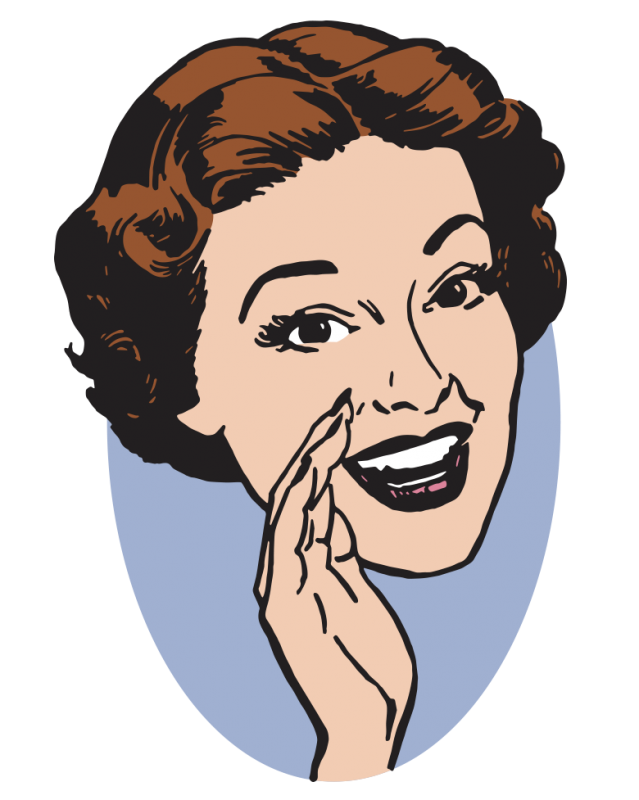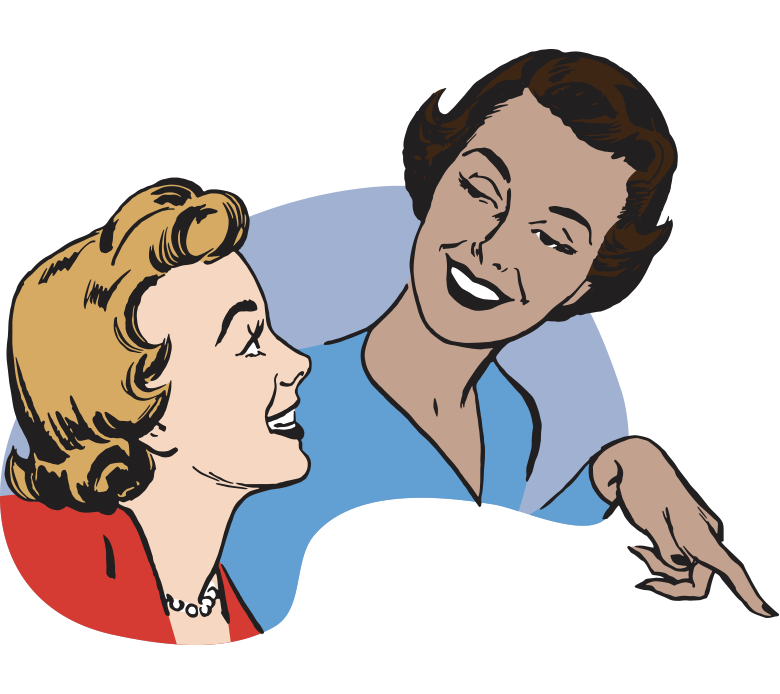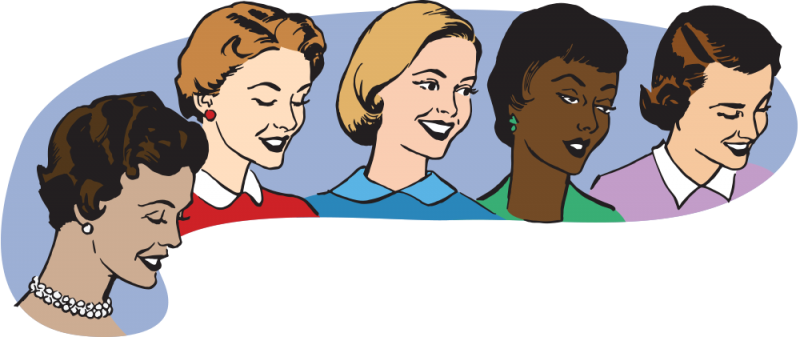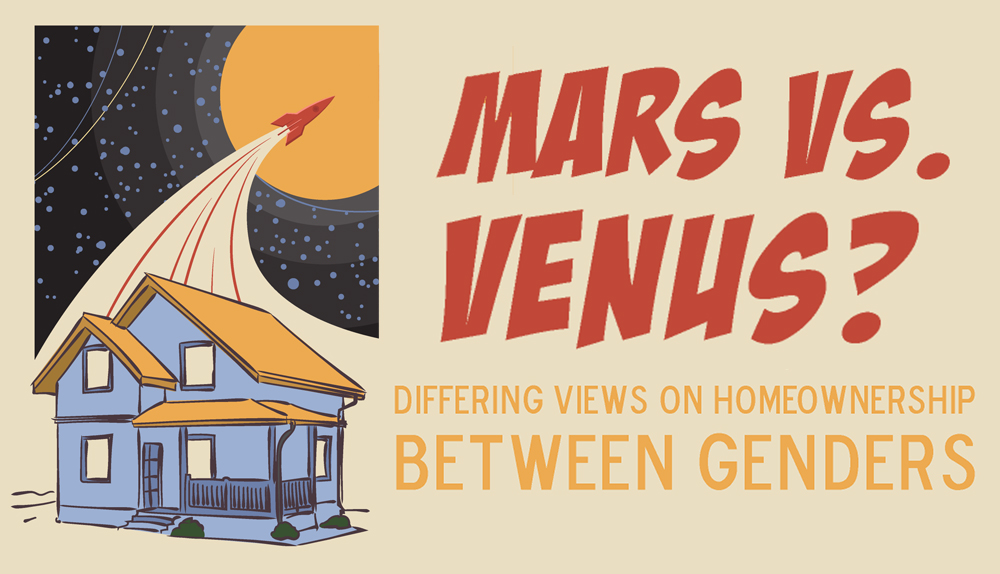The unique challenges women have faced in the past and continue to face today make owning a home a tangible sign of success for a woman. A woman’s home is a space to creatively express desires and dreams and to evoke certain feelings. From a practical standpoint, it’s an investment and source of security that remains a constant regardless of her marital status.
The NAWRB 2018 Women in the Housing Ecosystem Report (WHER) reveals some of the factors and trends that have contributed to an increase in women pursuing homeownership on their own. Single women and mothers are attracted to homeownership as a source of stability, a means of wealth-building, a safe place to raise their children and a sanctuary to call their own. According to the U.S. Census Bureau, single women have outpaced single men in homeownership for the last thirty years.
“A home is a woman’s sanctuary, a place to call her own and an invaluable asset that cements one’s professional progress and economic foundation,” states the report. “Homeownership provides a better life for women and their families, as well as a stable location for home-based women entrepreneurs to grow their businesses.”
However, why would women in general, have arguably a more intense relationship with owning a home? Do men and women really view the homebuying process and owning a home through different lenses?
On the surface level, it seems to make sense. We take it for granted that men and women think differently. We are told and taught about the differences between how men and women think in various ways.
 The Mars vs. Venus Myth
The Mars vs. Venus Myth
Look back to when you were a child. What did toy commercials look like? Girls’ toys were mostly marketed to appeal to a social community aspect whereas boys’ toys were geared towards action.
And then there are the whole “Mars vs. Venus” ideas, where men and women think so differently that they might as well live on separate planets.
However, there’s reason to believe that men and women might not think so differently.
In 2005, Psychologist Janet Hyde from the University of Wisconsin, Madison who is known as a leading academic in gender studies, published The Gender Similarities Hypothesis. This study lead to the conclusion that males and females are similar on most but not all psychological variables, including aptitudes for math.
Based on this conclusion, one wouldn’t think that men and women would view their living spaces through differing lenses, or have a different relationship to the idea of owning property.
But thinking ability is different from feeling. Feeling, while based on thought, has a person’s life history and their social environment at play.
In societies where the pervading cultural norm is that women are seen as more nurturing than men, and have been conditioned to be so, it’s only natural that women would be more inclined to view a home as a place of refuge, or a center from which to nurture.
 The Ugly History of Women and Property Ownership Rights
The Ugly History of Women and Property Ownership Rights
Although men and women, from a psychological perspective, have more in common than not, the treatment of women historically has shaped society and culture and molded women’s self-perception, which in turn has affected their ideas on homeownership. Given the unique history of women in having to overcome obstacles in order to gain equal rights for business and property ownership, the emotional payoff of owning property is perhaps higher with women than men.
Prior to the mid-18th century, women had no right to own property under their own name while married or control that property in the event of their husband’s death. Starting at around 1830 state by state, women (mostly married) gained further rights to own and control property in the absence of a husband. The long, slow slog from property rights to the right to vote undoubtedly had a profound effect on how women relate to ownership in terms of financial independence and personal freedom.
 The Home Is a Place Where a Woman Fulfills Her Destiny
The Home Is a Place Where a Woman Fulfills Her Destiny
As women gained increasing rights and were accepted into the workplace, new leaders emerged. These women purchased property that from the outside was a display of wealth and achievement and from the inside a manifestation of their “greatest self.”
Oprah Winfrey named her sprawling 42-acre Santa Barbara estate “The Promised Land.” It is at once a symbol of all she has achieved as a woman and a Biblical reference linking Jews coming out of Egypt to oppressed African Americans in exile holding onto the faith that one day they will achieve their “promised land.”
She conducts interviews with notable people on the grounds of the estate and draws inspiration from it. Oprah is an outlier in terms of success and purchasing power but her rise from poverty to homeownership relates to the struggle all women face to a certain extent when buying a home.
In our 2018 WHER Report, we highlight the incredible home buying power of women in the face of obstacles like gender pay gap and higher student loan debt. In fact, women have outpaced single men in homeownership consistently since 1986.
Undoubtedly, women are fueled by the powerful symbolism of owning their own homes and by what is says about a woman’s professional progress. It also becomes her means of wealth-building and a place to raise her children. It’s not just a home, it’s a sanctuary.
 Notable Women Who Turned Their Homes Into Sanctuaries
Notable Women Who Turned Their Homes Into Sanctuaries
Gertrude Stein: The American novelist moved to Paris where she turned her apartment into a meeting-place for the great writers of the day and lined the walls with modernist art.
Josephine Baker: The celebrated entertainer, member of the French resistance and civil rights activist preferred to live in France over the U.S. as she felt more accepted for who she was. She bought a Renaissance manor house, Château des Milandes, in 1947. There, she wrote, raised her 12 adopted children and received the French Legion of Honor.
Oprah Winfrey: Her 65-acre Montecito, CA estate serves as a reminder of the horrors of slavery, acts as an interview setting, is a place to read and to garden and is a space to celebrate, entertain and host other influential people.
Joan Rivers: The late Joan Rivers turned her New York Penthouse into her own “mini-Versailles,” a celebration of the hard work and commitment it took to build her wealth. There, she entertained in style and conducted business.
 2018 NAWRB Women in the Housing Ecosystem Report
2018 NAWRB Women in the Housing Ecosystem Report
This two-volume sequel to the 2017 Women in the Housing Ecosystem Report provides in-depth analysis, trends and policy suggestions regarding the state of women’s homeownership and women professionals in the housing ecosystem. Volume I, The State of Women’s Homeownership, uncovers the state of women’s homeownership by analyzing the overall health of the current market, women’s poverty and obstacles women and minorities face in becoming homeowners.
Volume II, Women in the Housing and Real Estate Ecosystem, includes an in-depth overview of the opportunities and obstacles women professionals face in the housing and real estate ecosystem, from the rate of women’s entrepreneurship and women’s roles in family offices and intergenerational wealth transfer, to female representation in the C-suite and gender diversity across the globe.
Here are some of the key findings related to women’s homeownership from Volume I: Single Women Outpace Single Men in Homeownership
Single women and mothers are attracted to homeownership as a source of stability, a means of wealth-building, a safe place to raise their children and a sanctuary to call their own. According to the U.S. Census Bureau, women have outpaced single men in homeownership for the last thirty years. This report lists some of the factors and trends that have women seeking homeownership, with or without a partner.
More Single Americans are Delaying Marriage
Women, and Millennials in general, are delaying marriage to gain an education and further their careers. U.S. Census Bureau data reveals that one in every five Americans 25 years and older have never been married; in 1960, only 9 percent of Americans occupied this group.
As single women delay marriage to focus on attaining higher education and pursue careers they find satisfying, they in turn build their financial independence. The average annual personal income for college-educated women (who married after age 30) is $50,415, compared with $32,263 for women—of the same age— who have only a high school diploma who married before age 20.
Single Mothers Want a Stable Home for Children
Single women are more likely to raise children on their own than are single men. The Pew Research Center reveals that single-mother households outnumber single-father households by more than three times. Single women may seek homeownership more than single men because they desire stable homes to raise children. Most, if not all, parents, including single women with lower incomes, wish to have a stable home in a safe and supportive community to raise their families.
Women Buyers as Investors
Women entrepreneurs wanting to start lucrative businesses are drawn to the housing ecosystem. Women are building long-term wealth by managing businesses and investing in real estate. The 2012 Survey of Business Owners revealed that the percentage of women-owned businesses has increased about 7 percent for all firms, 2 percent for real estate and leasing firms, and 3 percent for finance and investment firms. The increase of women entrepreneurs in the industry will affect housing development as more women increase their buying power and become homeowners.
Obstacles for Women: Gender Gap, Wage Gap, ™Pink Tax,” Career Advancement, and Student Loan Debt
Women are earning less than men for the same jobs, currently 80 cents for every dollar men earn. Women also face a persistent gender gap in the workforce, and find difficulties returning to the workforce when having children. As consumers, they are subject to a “pink tax” on hygiene products and higher lifetime medical expenses, and struggle with more debt than men.
According to the American Association of University Women (AAUW), women carry more student loan debt than men, which equates to almost two-thirds of the $1.3 trillion outstanding loan debt in the U.S. Female undergraduates take on more debt in a year their male counterparts: 44 percent compared to 39 percent. Millennial women face a heavier burden than men because they have lower personal income but with similar loan debt levels.
Other variables that contribute to higher loan debt for women include college major, occupation and working hours. Also, women often take about two years longer than men to pay off their undergraduate loans. These loan amounts rise if women wish to pursue post-graduate education.
Read the full report at www.nawrb.com/womenhousingecosystem

 Login
Login

